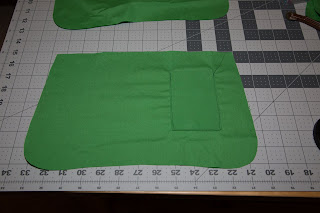There's an infinite variety of mathematical shapes and surfaces that can be constructed from polygons. Often, 3D models are constructed from paper or even 3D printed. What if these were instead made from something that's at least partially transparent?
The modern embroidery machine is capable of making free standing lace, basically embroidery without the fabric. With a sufficiently sophisticated embroidery design program, it's possible to make lace in all kinds of shapes and designs. This seems like something fun to explore!
For my first effort, I decided to keep things simple. I bought a square free standing lace design from Embroidery Library. Six squares can be combined into a simple 3 dimensional shape: a cube.
The free standing lace is sewn onto a water soluble stabilizer. This keeps the lace together during the construction process. Here, I'm using a fibrous stabilizer from the Embellish line from RNK Distributing. It holds together a lot better when there's a lot of needle punches than some of the more plastic-like water soluble stabilizers.
Here's the finished piece.
At this point, the excess stabilizer is trimmed and the whole thing thrown in a sink of cold water for a few minutes. All of the stabilizer just dissolves away.
In the end, I had six squares. All of the them were sewn with a single spool of thread. The color variations come from using variegated thread.
Come back next week for more fin with a sewing machine! Soon, I'll be designing my own lace and it won't all be squares.
















